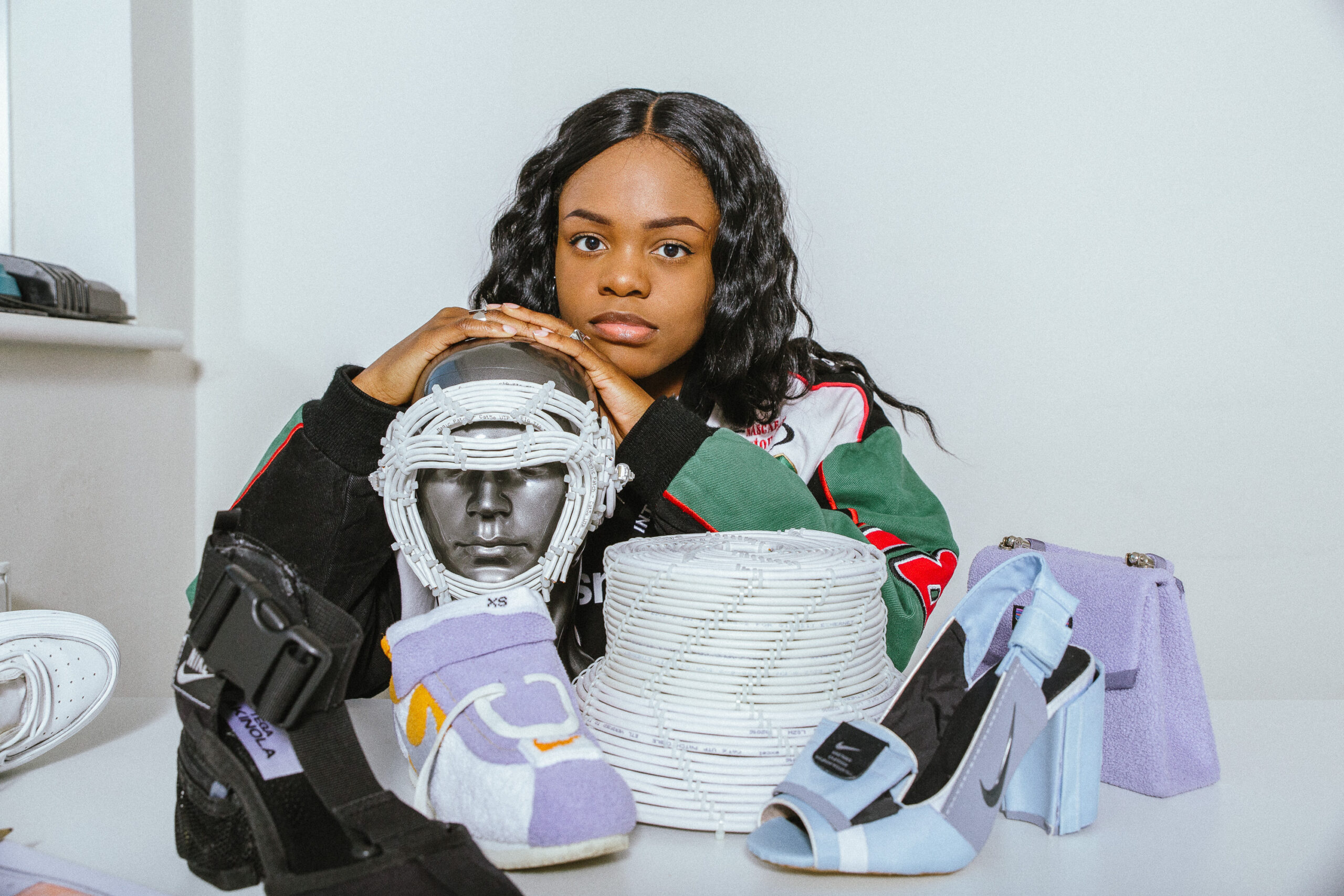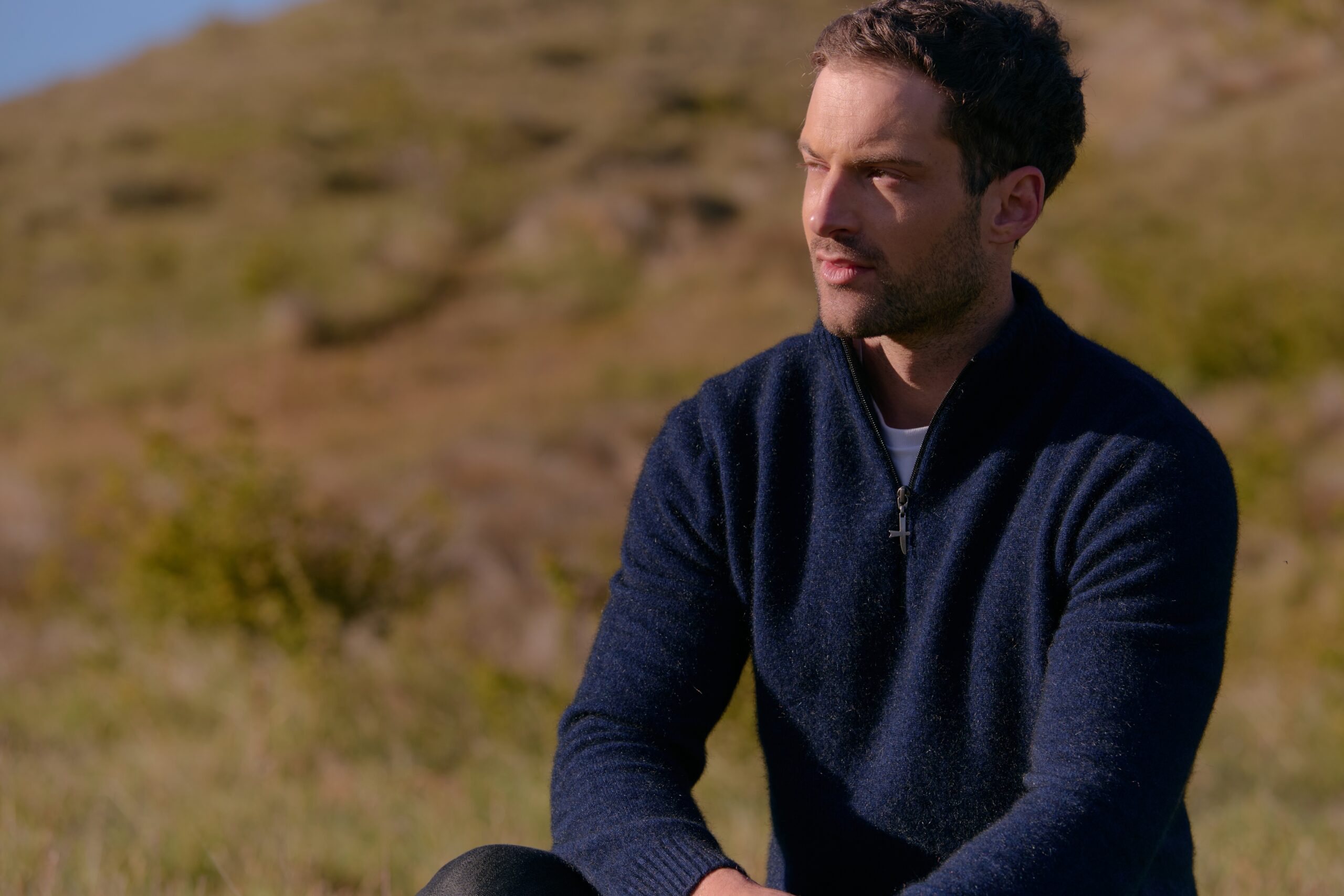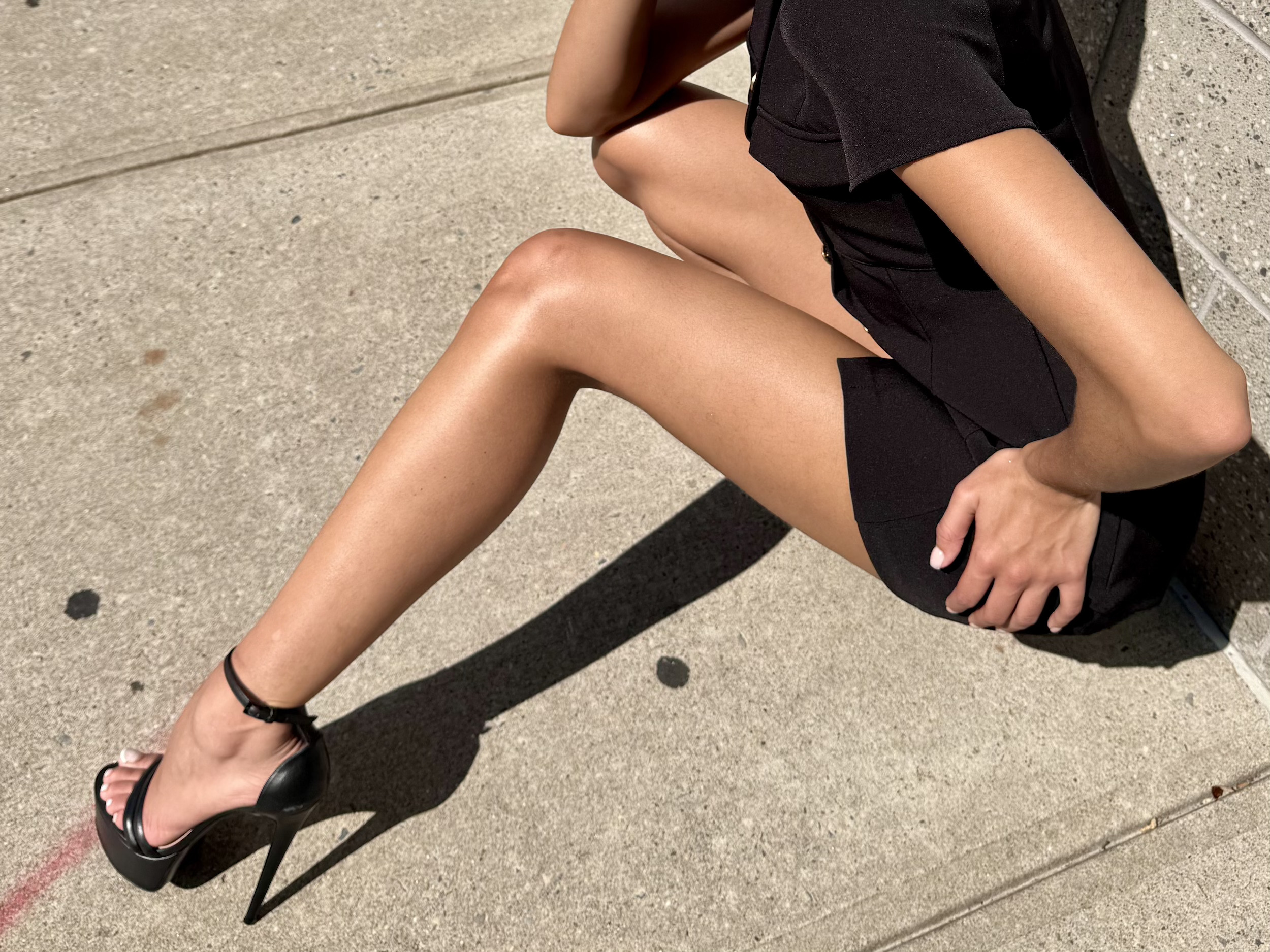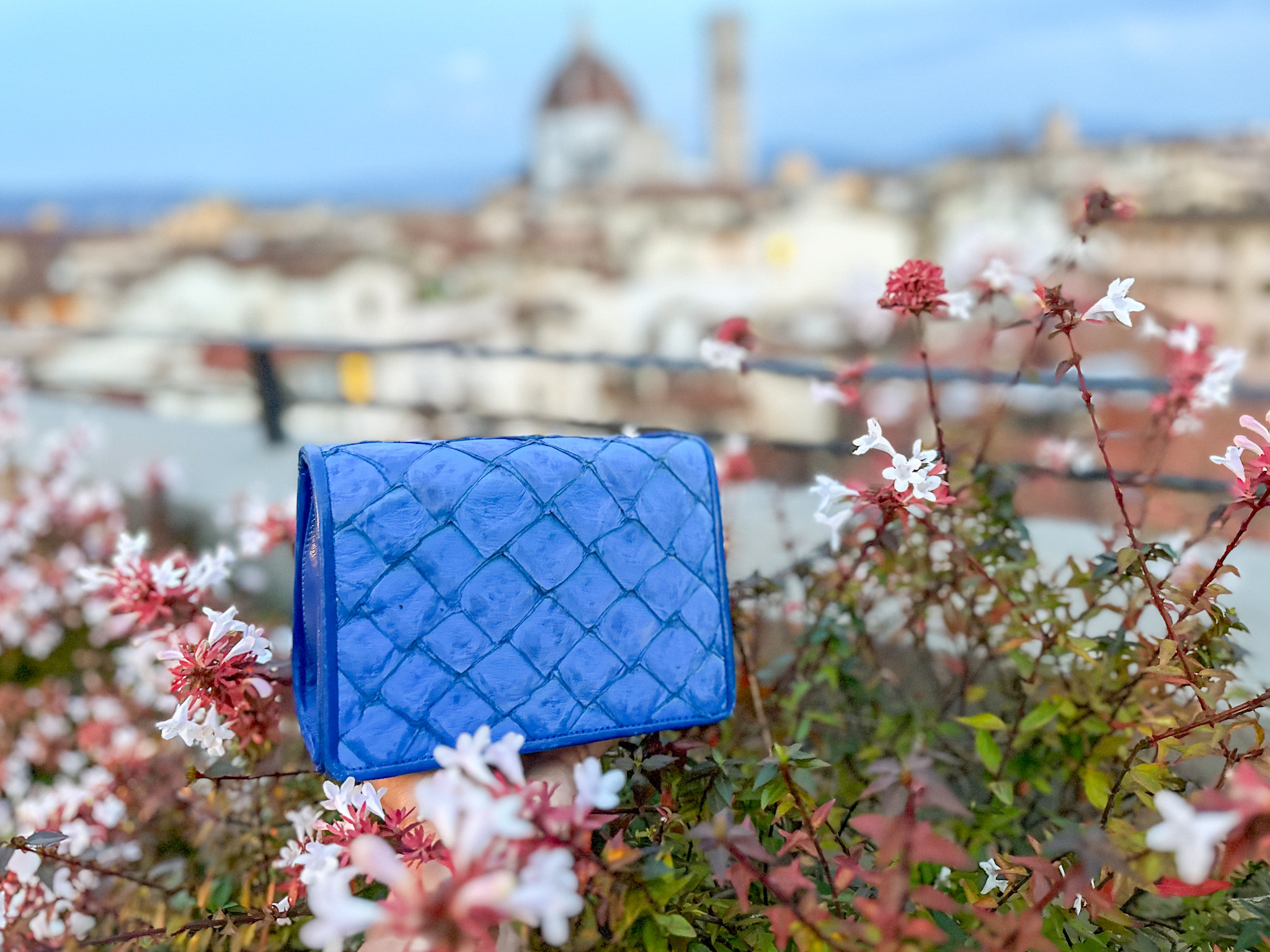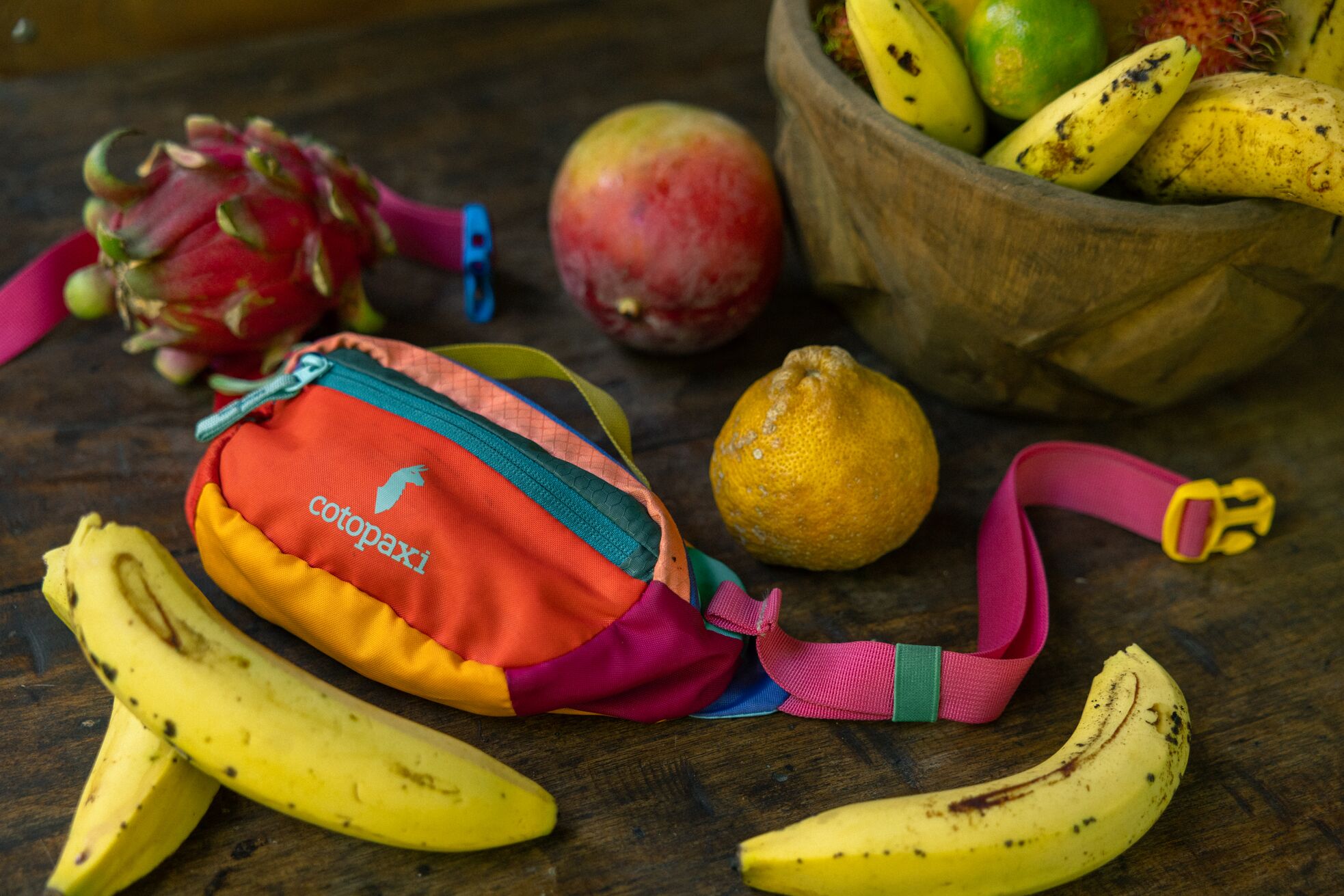NORTH STARS:
Wildlife Ecosystems
Gender Equality
Climate Action
“My parents tried to save money and shopped at thrift stores out of necessity after the crash of 2008. It made me scrappy and resourceful.”
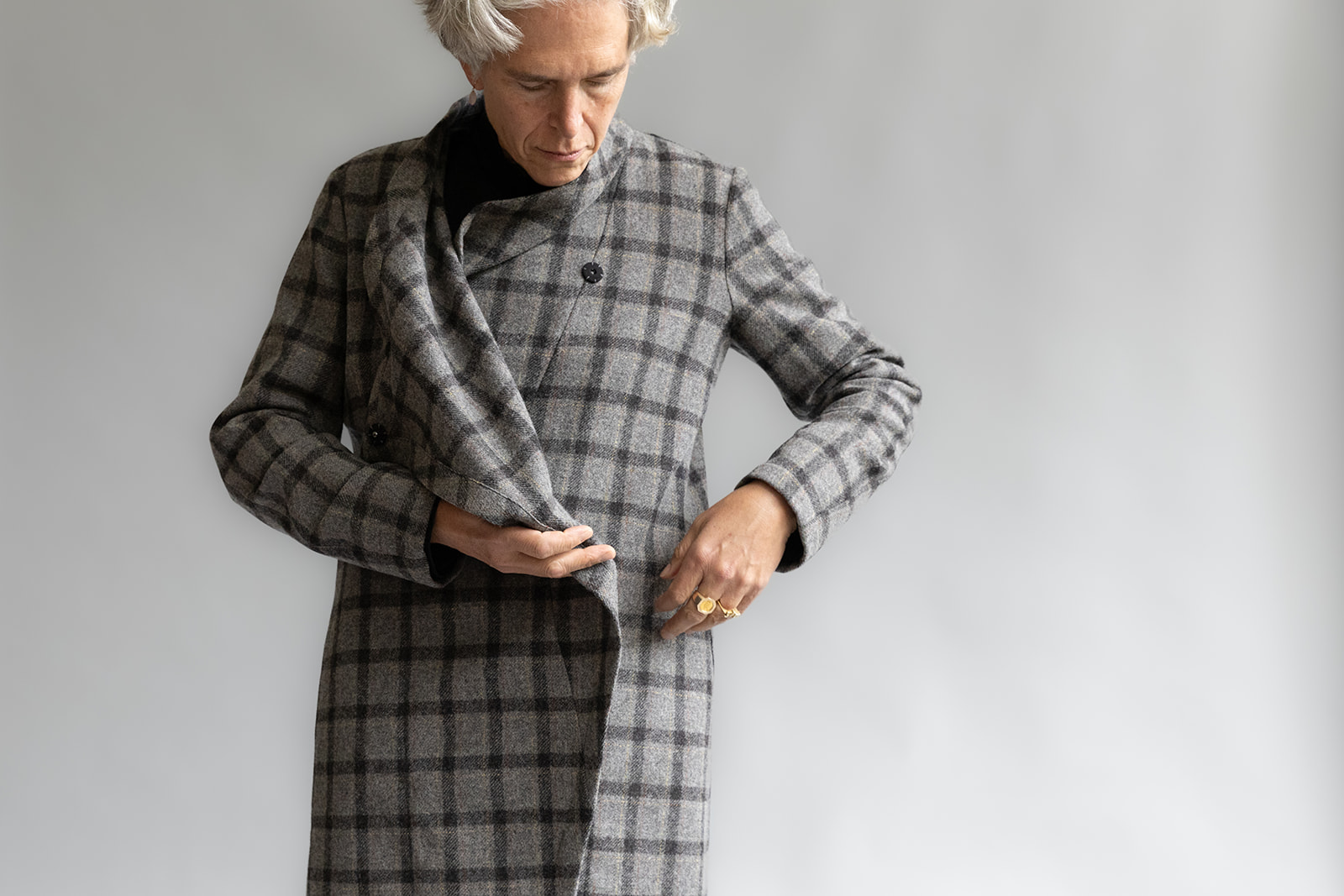
Wool lamina coat. Image courtesy of Sheena Elise.
It started with some foraged capri sun pouches.
At 10 years old, Mary Ellen Dimauro roamed her neighborhood pool houses, hunting for raw materials. “I always rooted around in the trash cans and dumpsters. My parents tried to save money and shopped at thrift stores out of necessity after the crash of 2008. It made me scrappy and resourceful,” she said.
Those capri sun pouches transformed into purses embellished with fur trim and neon colors. Dimauro, a fledgling entrepreneur, sold them door-to-door in her neighborhood. She then taught herself to make patterns by taking apart her clothing and reverse engineering each piece. She upcycled and repurposed items before sustainable fashion became a buzzword.
Vintage items in various states of deconstruction litter DiMauro’s home studio. Bucket hats made from quilt jacket scraps hang on the wall and a slew of tops sewn from brightly colored 1970s and 60s vintage towels await some fringe embellishment. After a brief stint with deadstock fabrics, Dimauro decided to source fully from existing garments to make her work even more sustainably driven.
“It’s like a treasure hunt,” she said. “I love to go antique shopping, estate sales, flea markets, and I source online through eBay and secondhand fabric sites. Sometimes people send me their quilts and I’ll make coats. Or a lace tablecloth passed down in their family will become a beautiful top.”
But right now, she is a one-woman show and her pieces sell on Instagram as fast as she lists them. DiMauro loves the one-of-kind clothing she creates, but would also love to have a team of seamstresses responsible for production so she can dream up new uses for old fabrics destined for the landfill.
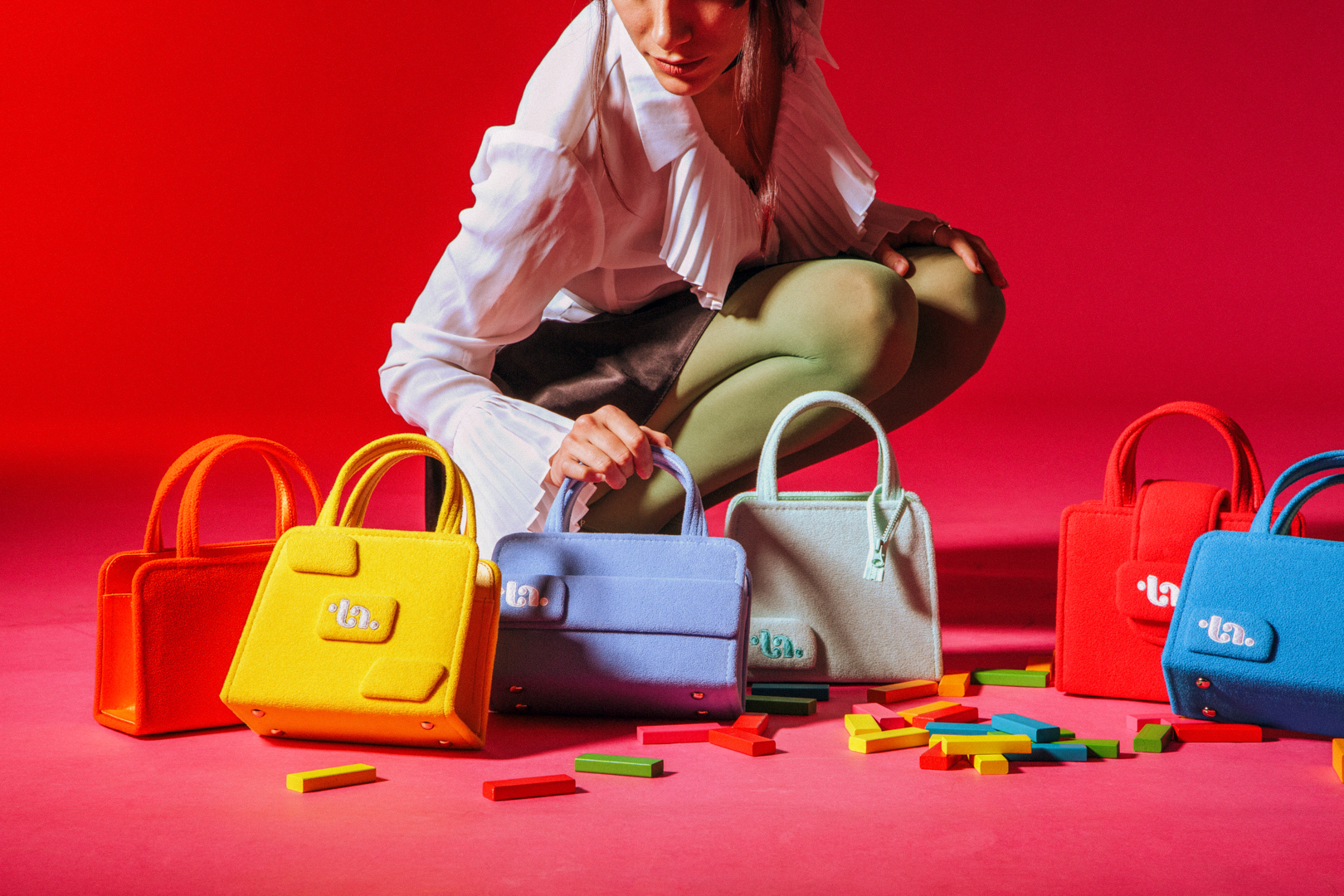
Handbag designs by Tegan Akinola. Courtesy of Akinola.
Tega Akinola also found herself in fashion out of necessity. Without a lot of money growing up, she upcycled her old clothes and shopped at thrift stores. Her mother, a seamstress, always tried to get Akinola interested in sewing. Still, it wasn’t until she started making money at 16 years old to buy her own clothes that curating her style became a design driver.
Always interested in sports, Akinola pursued a university degree in sports and exercise psychology, but her Instagram side hustle led her to her passion. Instead of taking a job out of college, she went home and turned her hobby into a brand. Sourcing from resale websites like Depop Vintage, eBay, and sometimes even electrical waste companies, she hunts for materials she can upcycle into something vibrant, and colorful that blurs the boundary between form and function. In a recent collaboration with Nike Re-Creation, she upcycled and repurposed the brand’s unsellable and excess products as part of their Move to Zero program.
Currently, she has a small collection of handbags crafted from Northface outdoor fleeces, but she wants to work more in sustainably produced leisure clothing and scale her brand. “I have to think about how can I still repurpose and upcycle, stick to my ethos but grow. That might mean working with production partners, and outsourcing my manufacturing so I can focus more on the design, the innovative side rather than the production. To survive as a business, you have to scale—it’s figuring out the balance of doing that in a conscious way.”
From picking out patterns, sewing with her mom and grandmother, and grinding in the New York fashion industry, working with textiles occupied a heart space for Libby O’Bryan and brought her to Asheville, North Carolina where she started Rite of Passage. “I’m interested in how clothes can empower a person, how the embodied energy in cared-for clothing lifts people,” she said.
In the workshop, machine after machine sits quietly awaiting its operator, long tables lay strewn with garment pieces and grommets, and bins of collected fabric bits bookend the space. O’Bryan pulls out a grey knit hat and tells the story of Material Return. 100 miles east in Morgantown, NC, they grind down the waste fabrics and spin it into new yarn which O’Bryan and other small producers make into new clothing. “The Collection,” a brand project of the Carolina Textile District, represents a collaboration of North Carolina manufacturers—like Rite of Passage—who operate under shared values of ethical production lines, meaningful jobs, and the revitalization of their region.
Rite of Passage is a Living Wage Certified Studio. For O’Bryan, this is the crux of sustainability and at the heart of scaling her business. “I believe we [must] cultivate demand by working collectively with other small craft manufacturers and educate consumers on the value of localized supply chains and living-wage craftsmanship.”
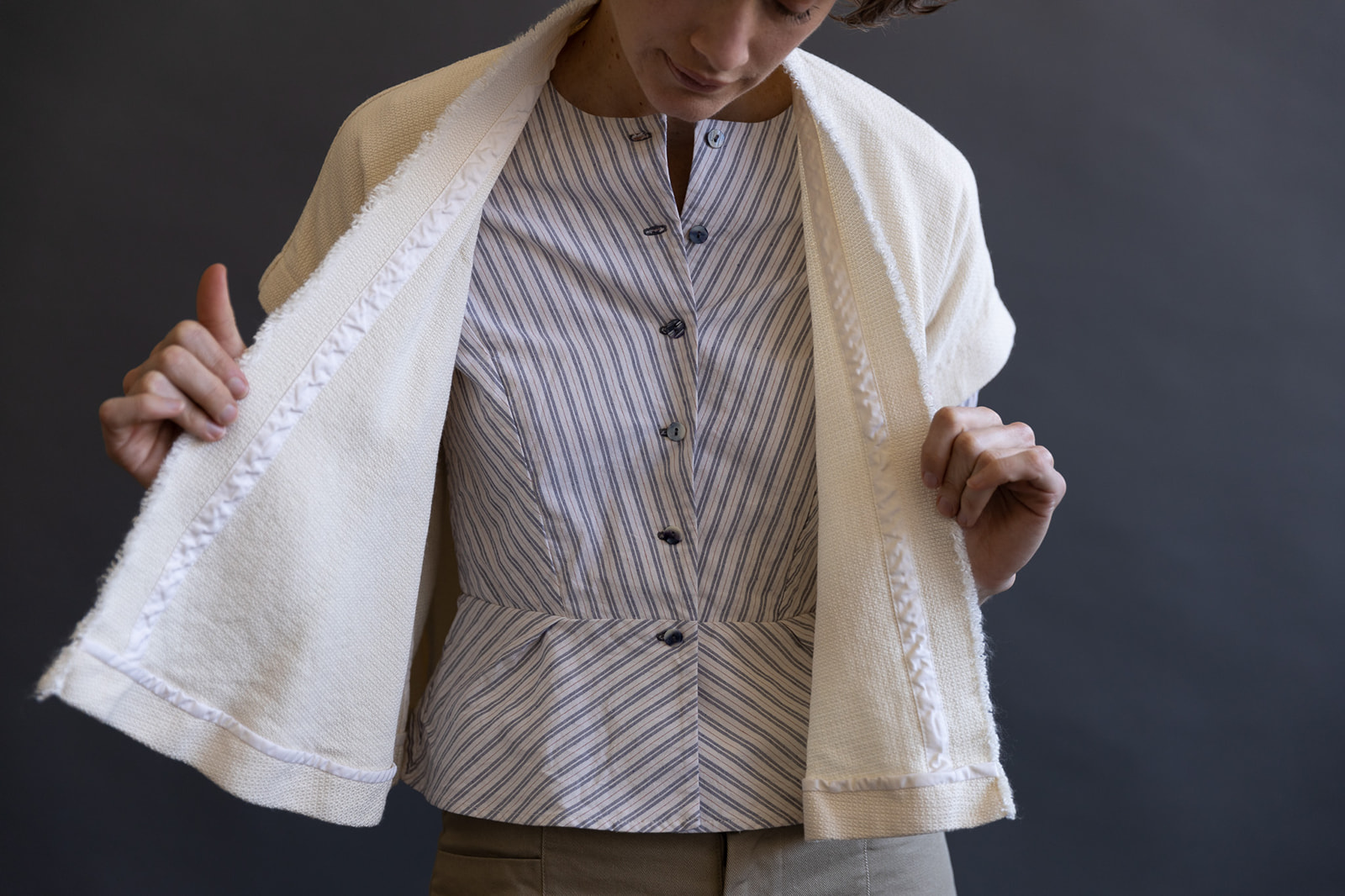
Rite of Passage Spring Collection. Courtesy of Sheena Elise.
Through a grant from the National Science Foundation, the Carolina Textile District implemented an Industrial Sewing Training Program in 2019. The goal is to help small producers grow a skilled workforce. She added, “It’s taught in multiple community college locations across Western North Carolina including Transformation Village, a residential community for homeless women, and The Industrial Commons, a progressive workforce development organization. We have sent employees through the training and have hired graduates.”
In a world that’s increasingly mass-produced, and with the rise of AI, people are finding value in sustainably created garments that don’t add to the landfill. Dimauro added, “People want to see and know that a real human makes their clothes—it’s somebody they know and trust crafting their garment with human hands, not some machine in a factory,” Dimauro said. “It’s good for the environment and gives the garment a specialness you can touch and feel.”
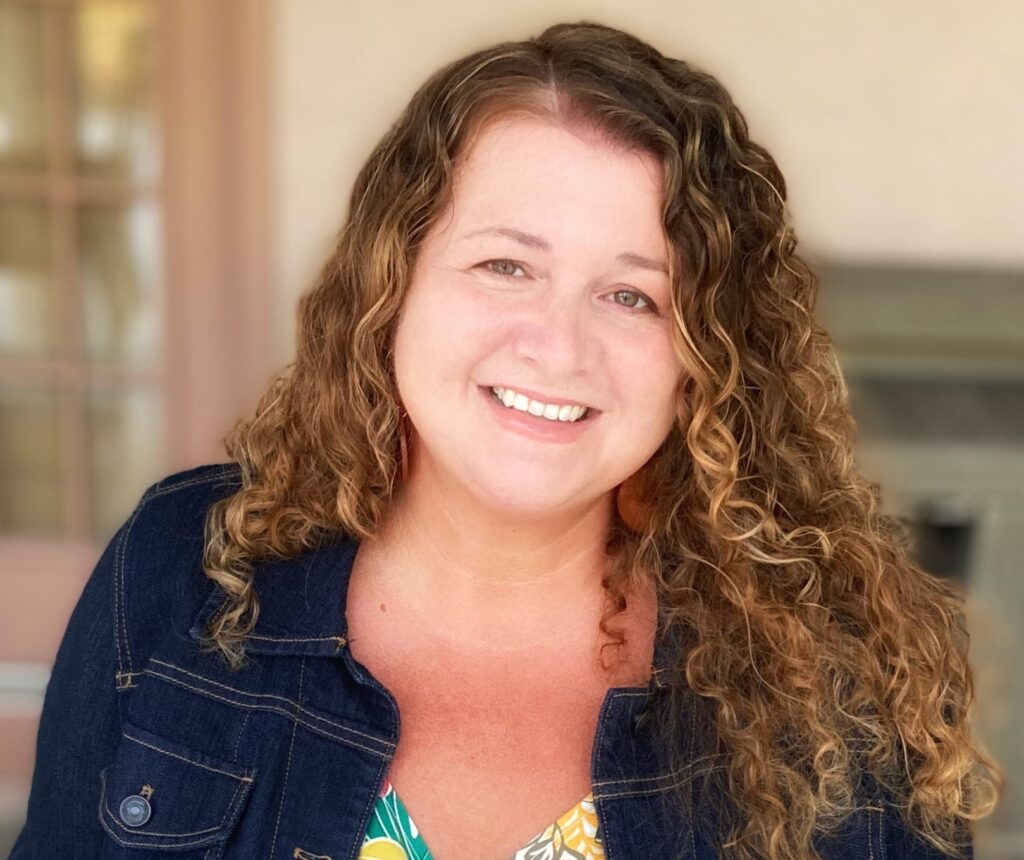
Carrie Honaker is a Florida-based food and travel writer who is not sure where she will land next, but it will involve messy eating, a spicy Tempranillo, and finding the local farmers market. She has hauled oyster cages off the Forgotten Coast of Florida, harvested indigenous crops with the Abenaki Tribe in Vermont, learned to make beef patties from a Jamaican auntie, made Guavaberry Liqueur with a 7th generation distiller on St. Maarten, and stomped cacao pods in Grenada. Follow Carrie on IG @writeonhonaker.
North Stars: Climate Action, Gender Equality, Wildlife Ecosystems


